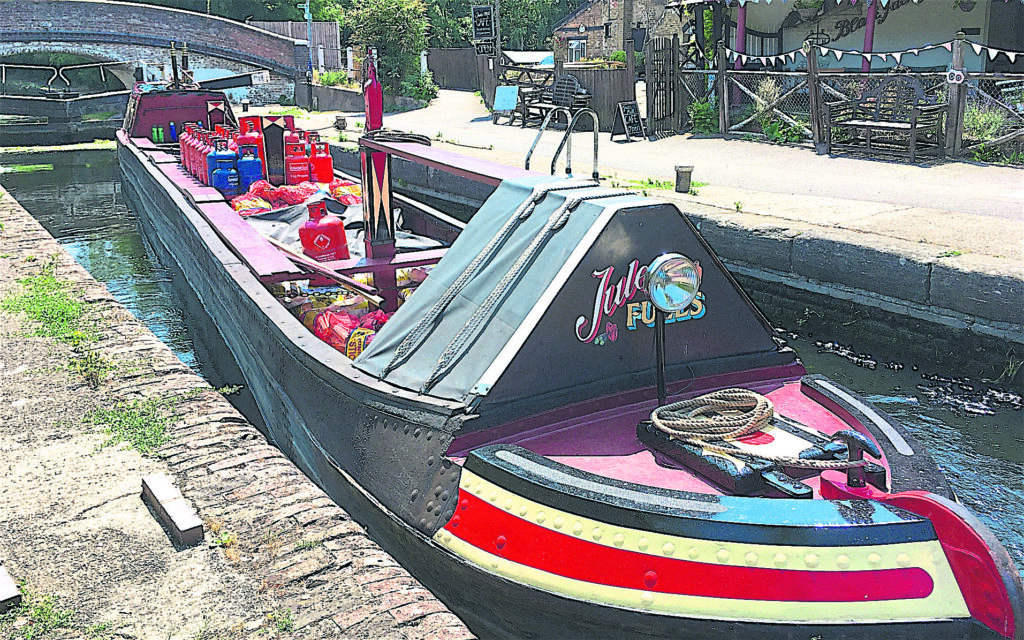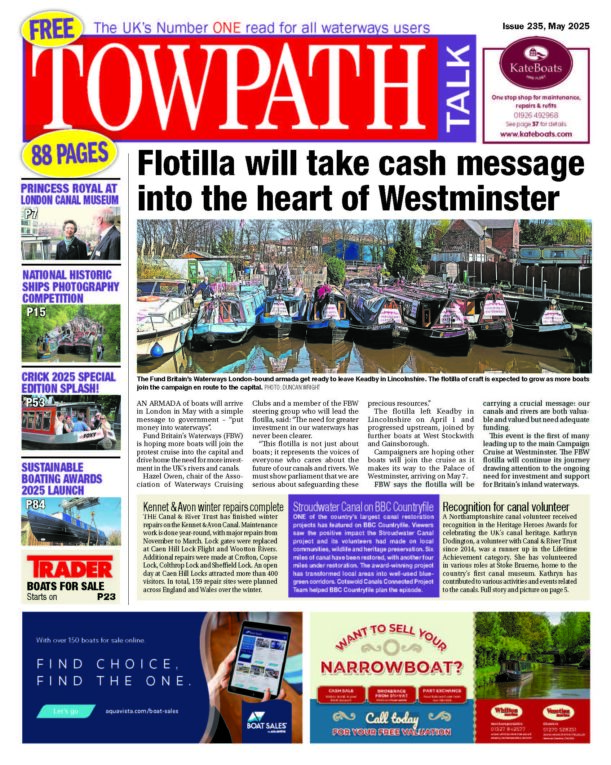Jonathan Mosse’s monthly look at freight development on the inland waterways.
BLEATING away on a monthly basis in a waterways magazine about the discrepancies in recognition of modal freight paths in the UK might, on the face of it, appear to be a fairly fruitless and therefore soul-destroying occupation. But is it?
Let’s start by saying that it prepares the ground among the enlightened in readiness for a connection with those in power, one stage away, who are tasked with devising the agenda and controlling the decision-making process.

Exploring two recent examples, driven by the Commercial Boat Operators Association (CBOA) might be helpful in coming to an understanding of what I’m suggesting. To be honest, the first example – involving modification of the Road Transport Fuel Obligation (RTFO) as it affects biofuel use by commercial craft on the UK inland waterways – is, to say the least, hopelessly opaque in its nature, demanding hours of dogged and determined reading.
Let’s simply suffice it to say that a well-place volunteer, recently retired from a career in the fuel industry, solemnly read through and digested the two relevant orders – amounting to 60 dense pages of government gobbledygook – before devising and inserting the association’s responses into a somewhat impenetrable Call for Evidence questionnaire, put out by the Department for Transport … all to a very tight deadline.

On the other hand, engagement with West Yorkshire’s Climate and Environment Plan was far more immediate, close to the UK inland waterways’ primary stamping ground, while being altogether more accessible!
Carriage by barge
In introducing the CBOA to the West Yorkshire Combined Authority, it underlined its role in representing and promoting waterways freight carriage by barge on the UK’s inland and estuarial waterways for economic and environmental reasons, pointing out that it is accepted by government as the representative industry body.
It goes on to observe that in reading “their interesting and forward-thinking Climate and Environment Plan, it appears that freight transport is not mentioned for either road, rail or water transport. The government environment and transport statistics state that about 6% of all UK CO2 is produced by freight transport; of this road transport contributes 92%, just 8% currently by water and rail.

“As the water transport trade organisation, we seek to promote far greater use of the waterways for freight transport than the comparatively little use made of them at present, both for the benefit of the environment and CO2 emissions.”
In support of their submission, they go on to provide the following highly pertinent data:
- The Inland Waterways Association (IWA) has carried out research and reports that road freight transport produces in the region of 207-280 g/tonne-km CO2, while inland waterway transport produces 40-66 CO2 g/tonne-km – an improvement five times greater with water transport: https://waterways.org.uk/waterways/freight-by-water
- An actual example, from barge operator Casper River and Canal Transport, operating on the Yorkshire waterways, is provided on their website. In addition, their vessel uses hydrogenated vegetable oil (HVO) for fuel, providing a much larger reduction in CO2 produced than if they were using mineral diesel: https://casperriverandcanaltransport.com/sustainability
- European studies report similar figures for CO2 reduction (using diesel) demonstrating that freight carried by inland waterways produces approximately 25% of CO2 per tonne kilometre compared to that produced by road: https://www.eea.europa.eu/publications/rail-and-waterborne-transport

Connected
The CBOA points out that “Yorkshire, as a whole, has some of the best freight waterways in the country – carrying vessels of up to 600 tons capacity – including the Aire & Calder Navigation in West Yorkshire, connected further afield to The Sheffield & South Yorkshire Navigation, the Humber, the Lower River Trent, the River Ouse.
“The above is not the only environmental benefit from using inland waterway transport, others include:
- Significant reduction in road congestion – HGVs are becoming a major issue in built-up areas
- Lower risk of road accidents/fatalities, particularly where pedestrians and cyclists are concerned
- Lower noise on highways
- Reduced highway wear, tear and potholing, meaning lower long-term maintenance costs
- Each barge can carry 20 or more equivalent lorry loads.
- Fewer particles created in the atmosphere from brake and tyre dust
- The ‘goodwill’ that canal transport promotes, in terms of providing an alternative to the lorry.

“In summary,” the CBOA concludes, “use of water freight provides excellent reduction in CO2 emissions. This should form an essential part of any policy or initiative involved with transport.
“All means, wherever practical and geographically suitable, should be used to encourage modal shift from road to water, to assist in achieving the environmental benefits required.
“We do hope this outlines why water transport should be included in your plan. We will be happy to advise further on anything if required.”




